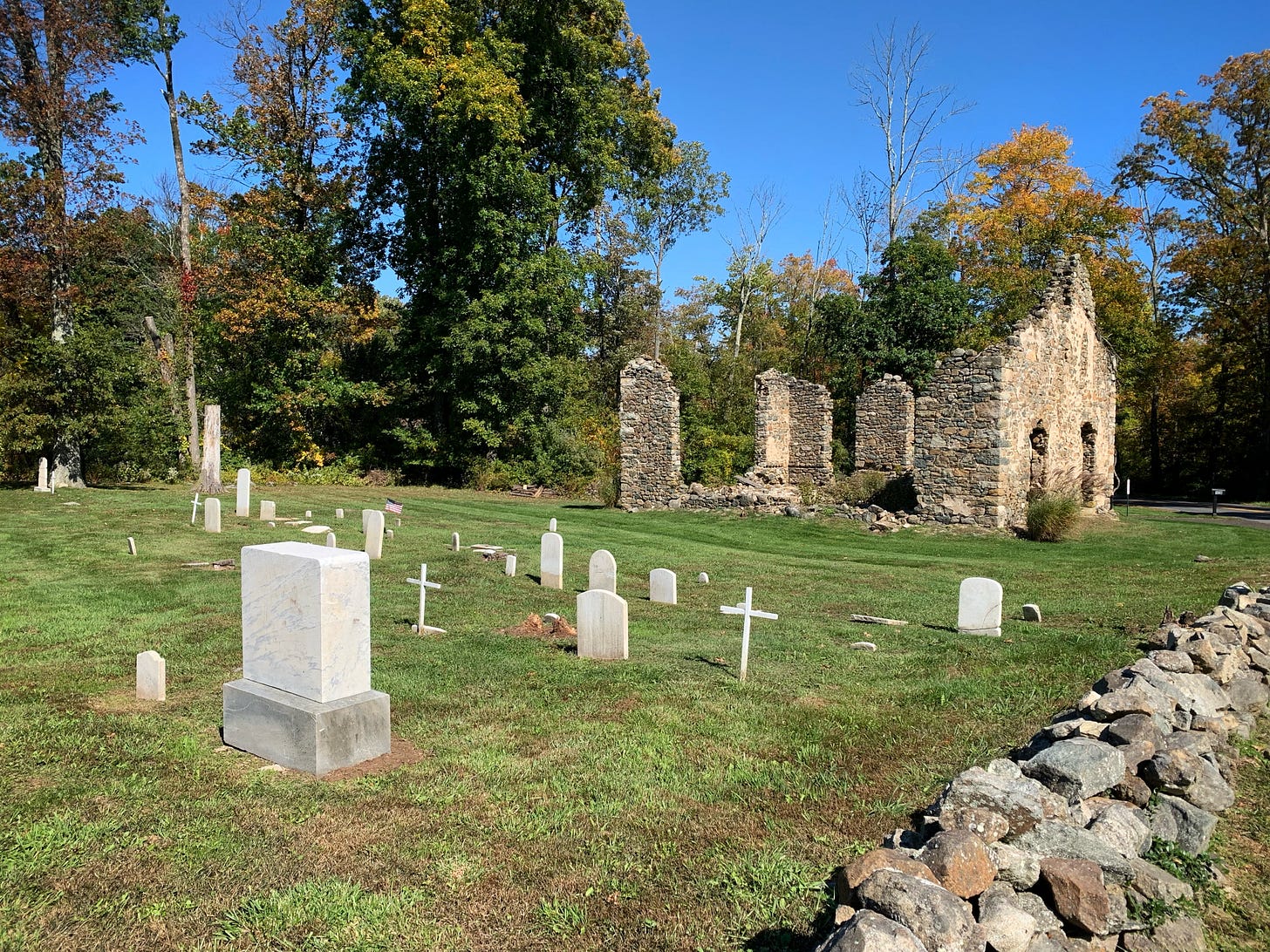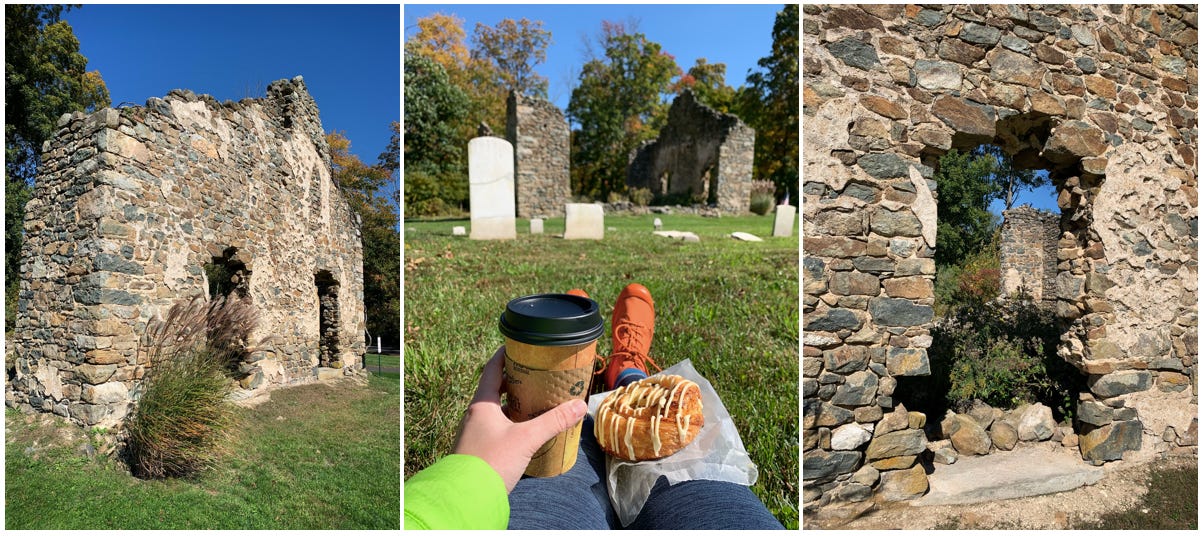Sunday Pastries With the Dead 3
The 1844-era Swackhammer Lutheran Churchyard Cemetery in Glen Gardner, NJ.
The old church is just a shell, now—a front facade, crumbling stone piled where parishioners once worshiped, slices of corner walls jutting up column-like to designate its diminutive floorplan. Walking the perimeter is a bit like sneaking behind the plywood flats of a soundstage’s small-town set—an illusion of dimension rendered paper-thin in the space of a few feet. I step back and fill in the blanks—repeating the pattern of stone, adding a stately wood front door, capping it with a slate-shingled roof. It feels warm here; the surrounding spray of pale gravestones, like the church, are simple and proud. “Salt-of-the-earth,” my Irish grandfather would’ve called them.
That’s how I’d describe the folks interred here, as well. Imagine someone sitting quietly, hands folded, in a chair by a crackling fireplace, nodding at you placidly as you walk in from the cold. This was the feeling I received as I meandered among the white marble markers.
The church was built in 1844 by mason Jacob “Stuttering Jake” Swackhammer (what a name!) for his uncle, Reverend Lambert Swackhammer (“fun” fact—Lambert was married three times and had 25 children). The Lutheran reverend was a staunch opponent of slavery and alcohol, and his church remained in use through 1896; the cemetery’s last burial was in 1915. The original building was covered in stucco, and some historians say there’s evidence that the roof was elevated to include a balcony.
After its abandonment, it became so overgrown that most people couldn’t even pinpoint its location. Over the years, the question of ownership became a heated debate as historians attempted to save the church and its cemetery—it was nearly condemned. In 2013, local historical associations and volunteers stepped in to clean up the property, removing over 40 trees, vines, and poison ivy—it’s now owned and maintained by a local nonprofit. Experts say there are around 75 people buried here—with some graves dating back to 1801—though only a handful of headstones have been found.
The most notable burial is in the far corner of the cemetery, designated with two stacked fieldstones—the traditional biblical manner by which slave graves were marked. During his tenure as reverend, Swackhammer—who’d been kicked out of his prior congregation for his anti-slavery stance—granted permission for an ex-slave to be buried on the church grounds. This was extremely unusual at the time—slaves were often not given proper burials, or were interred in separate cemeteries. Jinnett Thomson (also listed as “Linette Thompson”) was the former slave of U.S. Congressman Mark Thompson, a local ironmaster. There’s no birth or death date on record, but Swackhammer left the church in 1848, so Jinnett must’ve died before then. The plot now bears a cross with her name, and a lush patch of peonies grows atop it.
Peter Osmun (pictured right), mayor of a nearby township, was tragically killed during the caving-in of nearby Derry Run Mine. On April 5, 1883, a local paper reported, “Peter Osmun miraculously escaped sudden death a few days ago. He visited a mine which is being worked near by; after he had descended the ladder to the bottom, he was crushed down by the falling upon him of about five hundred weight of stone and earth. He was taken home and it is hardly possible for him to recover.” According to his headstone’s death date, he held on for 22 days before passing away.
Ziba’s headstone is, by far, the most ornate in this understated group. I enjoy the book symbol on James’s stone (the fact that it’s open symbolizes a life cut short—he was just 22 years old). There are also numerous natural stones placed among the marble markers, likely signifying other burial plots.
As always, there are too many children in the group. Three-year-old Mary Adaline Castner and her two-year-old sister Sarah Ann share a headstone; the inscription reads, “They were lovely and pleasant in their lives and in their death they were not divided.” Peter Osmun and his wife Eliza’s infant daughter remains unnamed. James F. Johnson was just one year old.
In memory of all the slaves whose places of rest have gone unmarked, I’ve donated in Jinnett’s name to two incredible organizations working to preserve historical African American burial sites: The Locust Hill African Cemetery and Museum and the Hamilton Hood Foundation. I invite you to join me in doing so—and if you have suggestions for other groups to give to, please drop their names in the comments.









